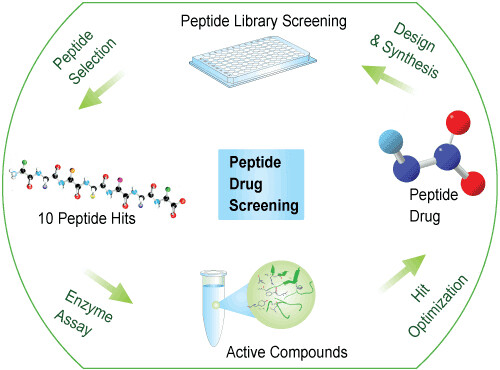Epitope mapping identifies antigen regions that serve as binding sites for antibodies. The overlapping linear peptides derived from the primary sequence of the antigen are frequently used for epitope screening. Individual peptides can be divided into several fragments that overlap. The resulting overlapping peptide libraries can then be used for processes including continuous and linear epitope mapping.
For example, to map the epitope of an antibody, a few overlapping fragments spanning the target regions are constructed in an expression vector. These constructs are transiently transfected in cells and whole cell lysates collected after 48 hours are subjected to Western blotting with the antibody. To further map the region of this fragment, a series of overlapping peptides are synthesized. These peptides and lysates from the cells expressing the target full-length gene or empty vector (negative) are performed by the dot blot.
Mapping epitopes quickly and accurately are challenging because the epitopes tend to be nonlinear on antigens. Combining binding specifically toward two distinct epitopes into a single molecule can significantly enhance the immunotherapeutic properties of monoclonal antibodies. Multivalent interactions are the most efficient at driving IgE receptor signaling pathways.
There are several useful tools for studying antigen-antibody interactions.
- Use the MAPs as the immunogens. Multiple Antigenic Peptides (MAPs) are peptides that are branched artificially, in which Lys residues are used as the scaffolding core to support the formation of 8 branches with varying or the same peptide sequences. For example, one goal is to include different epitopes from different virus proteins in a single unit. The epitopes showing the right prediction of antigenicity and conserved in most serotypes of a virus are selected and assembled as the MAP.
- Screening combinatorial peptide libraries to optimize enzyme substrates and create high-affinity protein ligands. A critical biological application of custom peptide libraries is the characterization of the binding events that occur between specific proteins and their peptide ligands. A series of Overlapping Peptide, Truncation Peptide, Alanine Peptide Scanning, Scrambled Peptide, or Positional Peptide can be used for mapping and validating epitopes, the characterization of therapeutic antibodies, studying anti-antibody and neutralizing antibody actions in vitro.

